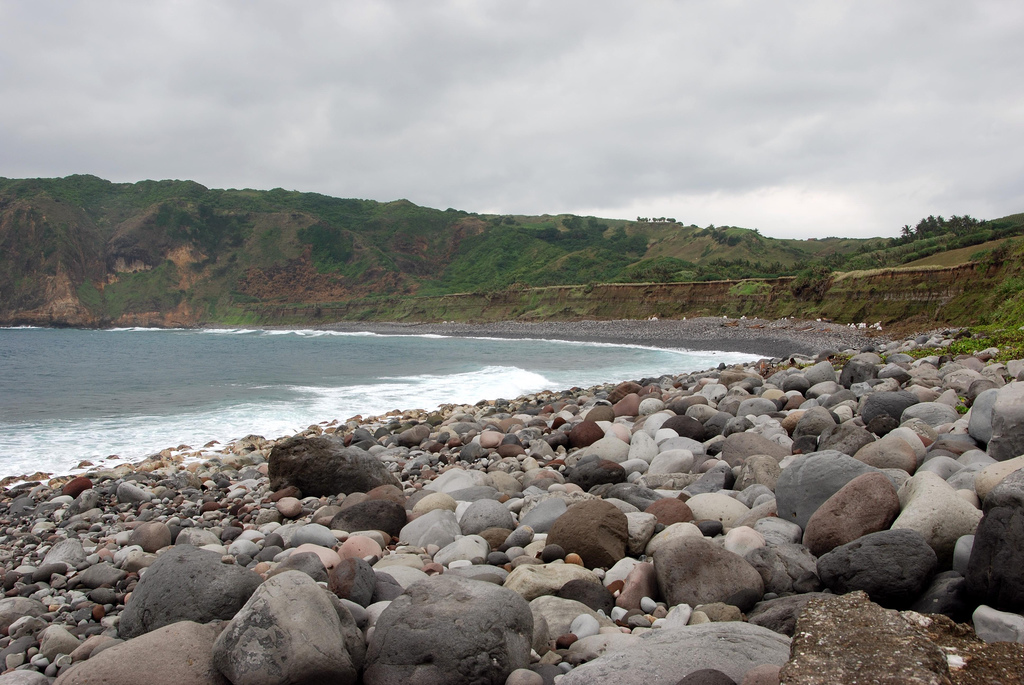|
Beaches
A beach is a landform alongside a body of water which consists of loose particles. The particles composing a beach are typically made from Rock (geology), rock, such as sand, gravel, shingle beach, shingle, pebbles, etc., or biological sources, such as mollusc shells or coralline algae. Sediments settle in different densities and structures, depending on the local wave action and weather, creating different textures, colors and gradients or layers of material. Though some beaches form on inland freshwater locations such as lakes and rivers, most beaches are in coastal areas where wind wave, wave or Ocean current, current action deposition (geology), deposits and reworks sediments. Coastal erosion, Erosion and changing of beach geologies happens through natural processes, like wave action and Extreme weather, extreme weather events. Where wind conditions are correct, beaches can be backed by coastal dunes which offer protection and regeneration for the beach. However, th ... [...More Info...] [...Related Items...] OR: [Wikipedia] [Google] [Baidu] |
Shingle Beach
A shingle beach, also known as either a cobble beach or gravel beach, is a commonly narrow beach that is composed of coarse, loose, well-rounded, and waterworn gravel, called ''shingle''. The gravel (shingle) typically consists of smooth, spheroidal to flattened, pebbles, cobbles, and sometimes small boulders, generally in the size range. Shingle beaches typically have a steep slope on both their landward and seaward sides. Shingle beaches form in wave-dominated locations where resistant bedrock cliffs provide gravel-sized rock debris. They are also found in high latitudes and temperate shores where the erosion of Quaternary glacial deposits provide gravel-size rock fragments. This term is most widely used in Great Britain.Neuendorf, Klaus K.E. Mehl, James P., Jr. Jackson, Julia A., 2011. ''Glossary of Geology'' (5th Edition). American Geosciences Institute. Narayana, A. C., 2016. ''Coastal landforms''. in Kennish, M.J., ed., pp. 143–157, ''Encyclopedia of Estuaries''. Spr ... [...More Info...] [...Related Items...] OR: [Wikipedia] [Google] [Baidu] |
Lifeguard
A lifeguard is a rescuer who supervises the safety and rescue of swimmers, surfers, and other water sports participants such as in a swimming pool, water park, beach, spa, river and lake. Lifeguards are trained in swimming and Cardiopulmonary resuscitation, CPR/Automated external defibrillator, AED first aid, certified in water rescue using a variety of aids and equipment depending on requirements of their particular venue. In some areas, lifeguards are part of the emergency services system to incidents and in some communities, lifeguards may function as the primary Emergency medical service, EMS provider. Responsibilities A lifeguard is responsible for the safety of people in an area of water, and usually a defined area immediately surrounding or adjacent to it, such as a beach next to an ocean or lake. The priority is to ensure no harm comes to users of the area for which they are responsible. Lifeguards often take on this responsibility upon employment, However, there ma ... [...More Info...] [...Related Items...] OR: [Wikipedia] [Google] [Baidu] |
Plastic Pollution
Plastic pollution is the accumulation of plastic objects and particles (e.g. plastic bottles, bags and microbeads) in the Earth's environment that adversely affects humans, wildlife and their habitat. Plastics that act as pollutants are categorized by size into micro-, meso-, or macro debris. Plastics are inexpensive and durable, making them very adaptable for different uses; as a result, manufacturers choose to use plastic over other materials. However, the chemical structure of most plastics renders them resistant to many natural processes of environmental degradation, degradation and as a result they are slow to degrade. Together, these two factors allow large volumes of plastic to enter the environment as mismanaged waste which persists in the ecosystem and travels throughout food webs. Plastic pollution can afflict land, waterways and oceans. It is estimated that 1.1 to 8.8'' ''million tonnes of plastic waste enters the ocean from coastal communities each year. It is ... [...More Info...] [...Related Items...] OR: [Wikipedia] [Google] [Baidu] |
Sand
Sand is a granular material composed of finely divided mineral particles. Sand has various compositions but is usually defined by its grain size. Sand grains are smaller than gravel and coarser than silt. Sand can also refer to a textural class of soil or soil type; i.e., a soil containing more than 85 percent sand-sized particles by mass. The composition of sand varies, depending on the local rock sources and conditions, but the most common constituent of sand in inland continental settings and non-tropical coastal settings is silica (silicon dioxide, or SiO2), usually in the form of quartz. Calcium carbonate is the second most common type of sand. One such example of this is aragonite, which has been created over the past 500million years by various forms of life, such as coral and shellfish. It is the primary form of sand apparent in areas where reefs have dominated the ecosystem for millions of years, as in the Caribbean. Somewhat more rarely, sand may be composed ... [...More Info...] [...Related Items...] OR: [Wikipedia] [Google] [Baidu] |
Coastal Erosion
Coastal erosion is the loss or displacement of land, or the long-term removal of sediment and rocks along the coastline due to the action of Wind wave, waves, Ocean current, currents, tides, wind-driven water, waterborne ice, or other impacts of storms. The landward retreat of the shoreline can be measured and described over a temporal scale of tides, seasons, and other short-term cyclic processes. Coastal erosion may be caused by hydraulic action, abrasion (geology), abrasion, impact and corrosion by wind and water, and other forces, natural or unnatural. On non-rocky coasts, coastal erosion results in rock formations in areas where the coastline contains rock layers or fracture zones with varying resistance to erosion. Softer areas become eroded much faster than harder ones, which typically result in landforms such as tunnels, bridges, columns, and Column, pillars. Over time the coast generally evens out. The softer areas fill up with sediment eroded from hard areas, and roc ... [...More Info...] [...Related Items...] OR: [Wikipedia] [Google] [Baidu] |
Rock (geology)
In geology, rock (or stone) is any naturally occurring solid mass or aggregate of minerals or mineraloid matter. It is categorized by the minerals included, its Chemical compound, chemical composition, and the way in which it is formed. Rocks form the Earth's outer solid layer, the Earth's crust, crust, and most of its interior, except for the liquid Earth's outer core, outer core and pockets of magma in the asthenosphere. The study of rocks involves multiple subdisciplines of geology, including petrology and mineralogy. It may be limited to rocks found on Earth, or it may include planetary geology that studies the rocks of other celestial objects. Rocks are usually grouped into three main groups: igneous rocks, sedimentary rocks and metamorphic rocks. Igneous rocks are formed when magma cools in the Earth's crust, or lava cools on the ground surface or the seabed. Sedimentary rocks are formed by diagenesis and lithification of sediments, which in turn are formed by the weathe ... [...More Info...] [...Related Items...] OR: [Wikipedia] [Google] [Baidu] |
Water Pollution
Water pollution (or aquatic pollution) is the contamination of Body of water, water bodies, with a negative impact on their uses. It is usually a result of human activities. Water bodies include lakes, rivers, oceans, aquifers, reservoirs and groundwater. Water pollution results when contaminants mix with these water bodies. Contaminants can come from one of four main sources. These are sewage discharges, industrial activities, agricultural activities, and urban runoff including stormwater. Water pollution may affect either surface water or groundwater pollution, groundwater. This form of pollution can lead to many problems. One is the environmental degradation, degradation of aquatic ecosystems. Another is spreading Waterborne diseases, water-borne diseases when people use polluted water for drinking or irrigation. Water pollution also reduces the ecosystem services such as drinking water provided by the Water resources, water resource. Sources of water pollution are either p ... [...More Info...] [...Related Items...] OR: [Wikipedia] [Google] [Baidu] |
Hospitality Industry
The hospitality industry is a broad category of fields within the service industry that includes lodging, food and beverage services, event planning, theme parks, travel agency, tourism, hotels, restaurants, nightclubs, and bars. Sectors According to the Cambridge Business English Dictionary the "hospitality industry" consists of hotels and food service, equivalent to NAICS code 72, "Accommodation and Food Service". Definition in the United States In 2020, the United States Department of Labor Standard Industrial Classification (SIC) defines the hospitality industry more broadly, including: * 701 Hotels and Motels, including auto courts, bed and breakfast inns, cabins and cottages, casino hotels, hostels, hotels (except residential ones), inns furnishing food and lodging, motels, recreational hotels, resort hotels, seasonal hotels, ski lodges and resorts, tourist cabins and tourist courts * 704 Organization Hotels and Lodging Houses, On a Membership Basis * 58 ... [...More Info...] [...Related Items...] OR: [Wikipedia] [Google] [Baidu] |
Shack
A shack (or, in some areas, shanty) is a type of small shelter or dwelling, often primitive or rudimentary in design and construction. Unlike huts, shacks are constructed by hand using available materials; however, whereas huts are usually rural and made of natural materials (mud, rocks, sticks, etc.) shacks are generally composed of scavenged man-made materials like abandoned construction debris, repurposed consumer waste and other useful discarded objects that can be quickly acquired at little or no cost and fashioned into a small dwelling. Background In areas of high population density and high poverty, shacks are often the most prevalent form of housing; it is possible that up to a billion people worldwide live in shacks. Fire is a significant hazard in tight-knit shack settlements. Settlements composed mostly or entirely of shacks are known as slums or shanty towns. In Australian English, ''shack'' can also refer to a small holiday house with limited conveniences, ... [...More Info...] [...Related Items...] OR: [Wikipedia] [Google] [Baidu] |
Changing Room
A changing room, locker room (usually in a sports, theater, or staff context), or changeroom (regional use) is a room or area designated for changing one's clothes. Changing-rooms are provided in a semi-public situation to enable people to change clothes with varying degrees of privacy. A fitting room, or dressing room, is a room where people try on clothes, such as in a department store. Separate changing rooms may be Sex segregation, provided for men and women, or there may be a non-gender-specific open space with individual cubicles or stalls, as with unisex public toilets. Many changing rooms include toilets, sinks and showers. Sometimes a changing room exists as a small portion of a restroom/washroom. For example, the men's and women's washrooms in Toronto's Yonge–Dundas Square (which includes a water play area) each include a change area which is a blank counter space at the end of a row of sinks. In this case, the facility is primarily a washroom, and its use as a c ... [...More Info...] [...Related Items...] OR: [Wikipedia] [Google] [Baidu] |
Man O'war Cove Near Lulworth Dorset Arp
A man is an adult male human. Before adulthood, a male child or adolescent is referred to as a boy. Like most other male mammals, a man's genome usually inherits an X chromosome from the mother and a Y chromosome from the father. Sex differentiation of the male fetus is governed by the SRY gene on the Y chromosome. During puberty, hormones which stimulate androgen production result in the development of secondary sexual characteristics that result in even more differences between the sexes. These include greater muscle mass, greater height, the growth of facial hair and a lower body fat composition. Male anatomy is distinguished from female anatomy by the male reproductive system, which includes the testicles, sperm ducts, prostate gland and epididymides, and penis. Secondary sex characteristics include a narrower pelvis and hips, and smaller breasts and nipples. Throughout human history, traditional gender roles have often defined men's activities and opp ... [...More Info...] [...Related Items...] OR: [Wikipedia] [Google] [Baidu] |









